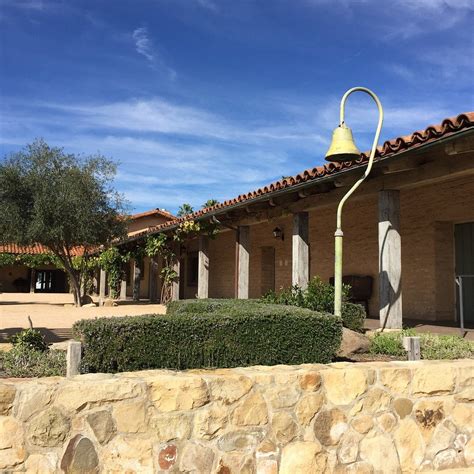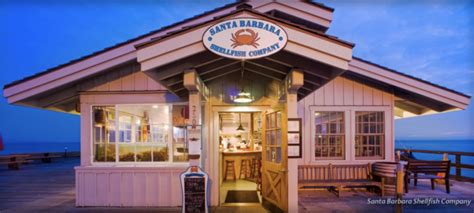The Santa Barbara History Museum, nestled in the heart of downtown Santa Barbara, California, is a treasure trove of historical artifacts, stories, and exhibits that showcase the rich and diverse heritage of the region. As you step into this museum, you are not just entering a building; you are embarking on a journey through time, exploring the evolution of Santa Barbara from its earliest inhabitants to the present day. Here are seven fascinating facts about the Santa Barbara History Museum that you should know, each offering a unique window into the city’s captivating past.
1. Founding and Mission
Established with the mission of collecting, preserving, and exhibiting the history of Santa Barbara, the museum has been a cornerstone of the community since its inception. Its primary goal is to educate visitors about the city’s history, from the indigenous peoples who first inhabited the area to the Spanish period, Mexican independence, and finally, its incorporation into the United States. This comprehensive approach to history makes the museum a valuable resource for anyone interested in understanding the complexities and beauty of Santa Barbara’s cultural landscape.
2. The Gledhill Library
One of the museum’s most prized possessions is the Gledhill Library, a research library that houses an extensive collection of books, manuscripts, photographs, and other historical documents related to Santa Barbara’s history. Scholars and enthusiasts alike can delve into the library’s vast resources to uncover new insights into the city’s past, making it an indispensable tool for historical research and education. The library’s collection is a testament to the museum’s commitment to preserving and sharing knowledge about Santa Barbara’s rich heritage.
3. Exhibits and Displays
The museum’s exhibits are carefully curated to showcase the breadth of Santa Barbara’s history, with displays that range from the Chumash Indians’ traditional way of life to the influence of Spanish and Mexican cultures, and the impact of the arrival of Americans. Each exhibit is designed to engage visitors, providing a deeper understanding of the historical events and figures that have shaped the city. The exhibits are regularly updated and rotated, ensuring that there is always something new to discover, whether you are a first-time visitor or a frequent attendee.
4. Community Engagement
The Santa Barbara History Museum is not just a repository of historical artifacts; it is also a vibrant community hub. The museum offers a variety of programs and events, including lectures, workshops, and guided tours, designed to engage the community and foster a sense of shared history. These activities make the museum a dynamic and interactive space, where history comes alive through personal stories and collective experiences. By engaging with the community in such a meaningful way, the museum helps to ensure that Santa Barbara’s history remains relevant and accessible to all.
5. Architectural Significance
The museum itself is housed in a building of historical significance, reflecting the architectural style of Santa Barbara, which is characterized by Spanish and Mexican influences. The building’s design and the museum’s location in the heart of the city underscore the importance of preserving historical architecture as part of the cultural heritage of Santa Barbara. Visitors can appreciate not only the exhibits inside but also the aesthetic and historical value of the building and its surroundings, creating a holistic experience that enriches one’s understanding of the city.
6. Educational Programs
For students and educators, the Santa Barbara History Museum offers tailored educational programs that align with curriculum standards, providing a hands-on and immersive learning experience. These programs are designed to inspire young minds, fostering an appreciation for history and encouraging further exploration and study. By integrating historical learning with interactive activities, the museum plays a vital role in shaping the next generation’s understanding of Santa Barbara’s past and its significance in the present.
7. Support and Volunteer Opportunities
The museum relies on the support of its community to continue its mission of preserving and sharing Santa Barbara’s history. Volunteer opportunities and membership programs are available for those who wish to contribute their time or resources. By supporting the museum, individuals can play a direct role in ensuring that the history of Santa Barbara remains a vibrant and accessible part of the community’s fabric. Whether through volunteering, donating, or simply spreading the word, everyone can be a part of the museum’s ongoing story.
In conclusion, the Santa Barbara History Museum is more than a collection of artifacts and exhibits; it is a gateway to understanding the complex tapestry of cultures, events, and figures that have shaped Santa Barbara into the city it is today. As a center for historical learning, community engagement, and cultural preservation, the museum stands as a testament to the enduring power of history to educate, inspire, and unite us.
What are the museum’s operating hours?
+The Santa Barbara History Museum is open Tuesday through Saturday from 10 AM to 5 PM and Sunday from 12 PM to 5 PM. It is closed on Mondays and major holidays. Please check the museum’s website for any updates on hours of operation before planning your visit.
Does the museum offer guided tours?
+Yes, the Santa Barbara History Museum offers guided tours for individuals and groups. These tours provide a more in-depth look at the museum’s exhibits and can be tailored to focus on specific aspects of Santa Barbara’s history. It is recommended to schedule guided tours in advance to ensure availability.
How can I support the museum’s mission?
+Support for the Santa Barbara History Museum can come in many forms, including membership, donations, and volunteering. Members and donors help fund the museum’s operations, exhibits, and educational programs, while volunteers contribute their time and skills to various aspects of museum life. Every form of support is invaluable in helping the museum achieve its goals.



